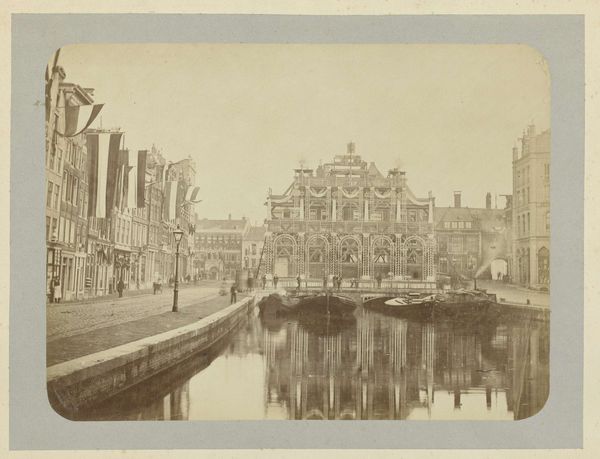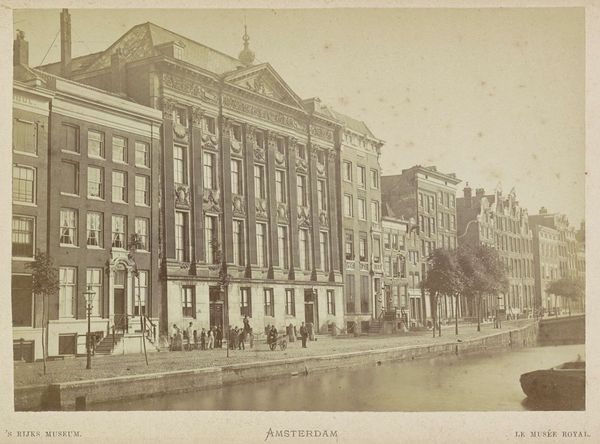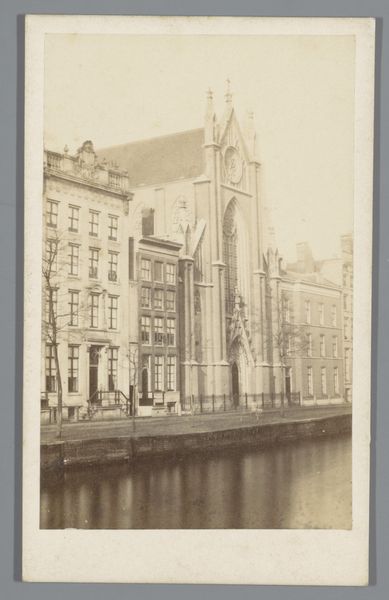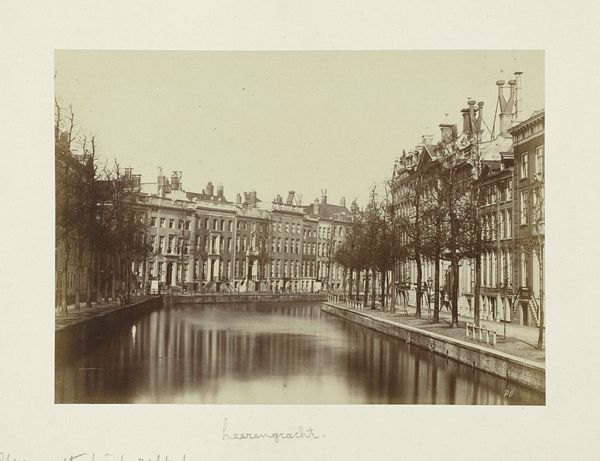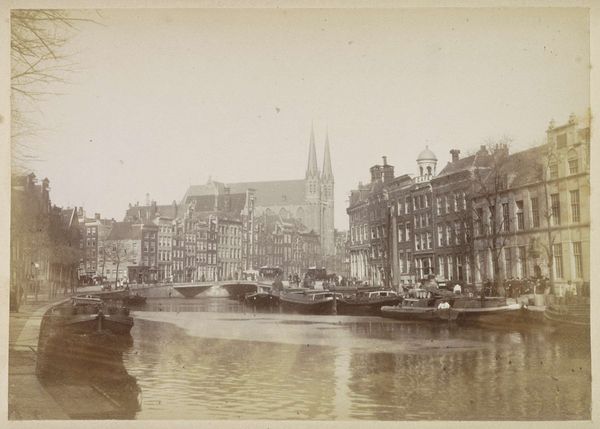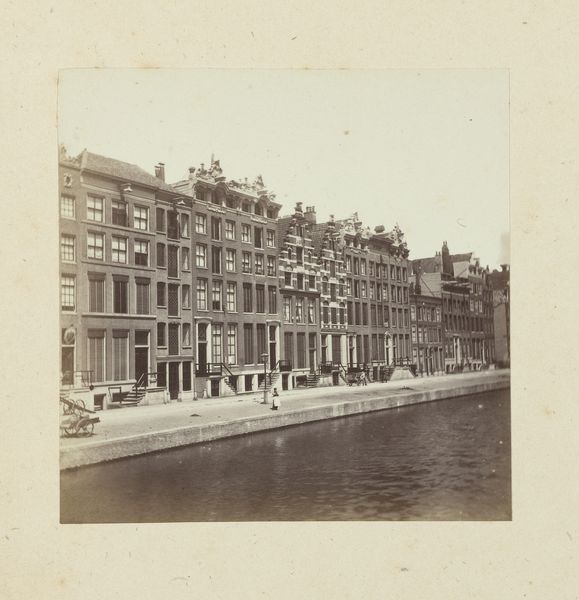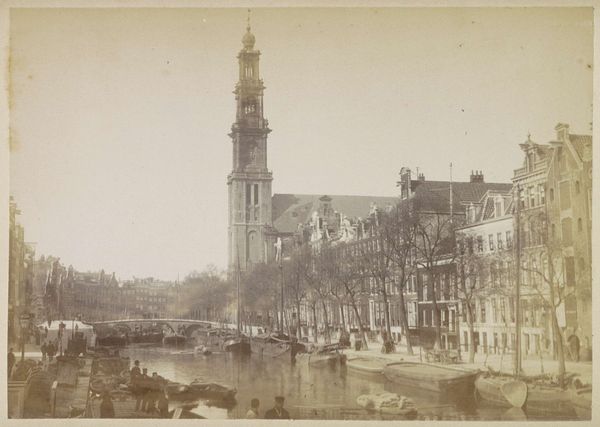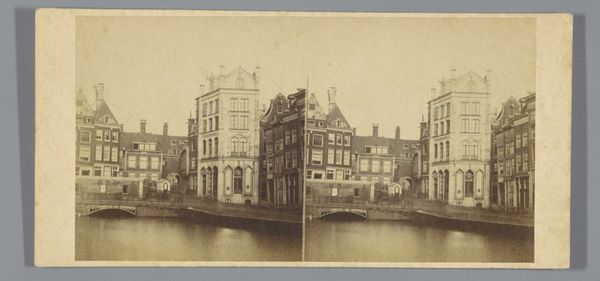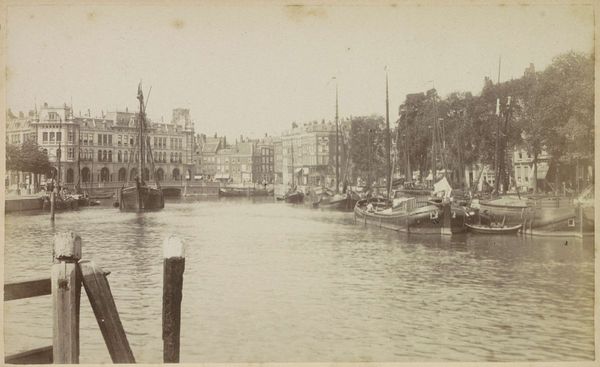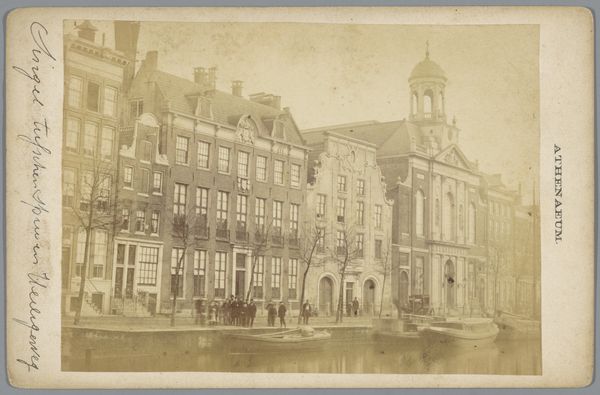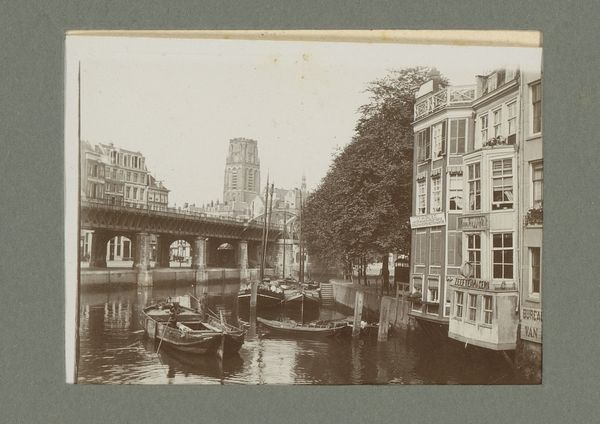
#
architectural sketch
#
aged paper
#
toned paper
#
light pencil work
#
pencil sketch
#
old engraving style
#
personal sketchbook
#
watercolour illustration
#
pencil art
#
watercolor
Dimensions: height 163 mm, width 227 mm
Copyright: Rijks Museum: Open Domain
Editor: This is Eduard Isaac Asser's "Gezicht op de Keizersgracht in Amsterdam," from around 1855. It’s a beautiful, delicate work, like a faded memory. The sepia tones give it such an antique feel. I'm curious about its social implications. What can we understand about the culture of the time based on this portrayal? Curator: A crucial question! Asser's photograph freezes a moment in Amsterdam’s history, yet it invites a conversation about the dynamics of class, identity, and progress. Who owned these canal houses, and who had access to the prosperity they represent? What does the imposing church convey about the role of religion and power structures within this society? Editor: So, the architecture itself tells a story of societal structure? Curator: Absolutely. Look at the stark contrast between the grand architecture and the hints of everyday life along the canal. Whose labor maintained this picturesque view? Where are the working class represented in this narrative? The photographic gaze often reflects the perspectives and biases of those in power. Editor: That makes me think about how photography was evolving then, still pretty exclusive… a tool mainly for the wealthy. Curator: Precisely! Therefore, we need to consider how Asser's choices – what to include, what to exclude – shaped the historical record and what ideological frameworks underpin them. We might even consider the gendered aspects of 19th century photography and ask whether and how his personal identity influenced his work. Editor: That's a great perspective; it's amazing to think about how even a seemingly straightforward landscape photo engages in those issues. Thank you. Curator: It reminds us that art never exists in a vacuum; it’s always speaking to – and often, complicit with – broader social and political currents. Understanding this can offer us vital insights into both the past and present.
Comments
No comments
Be the first to comment and join the conversation on the ultimate creative platform.

